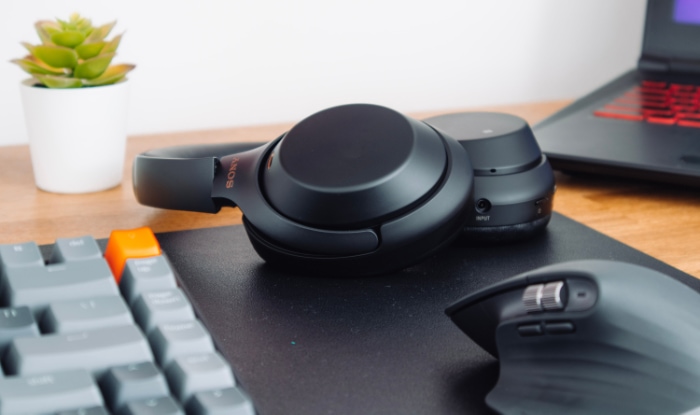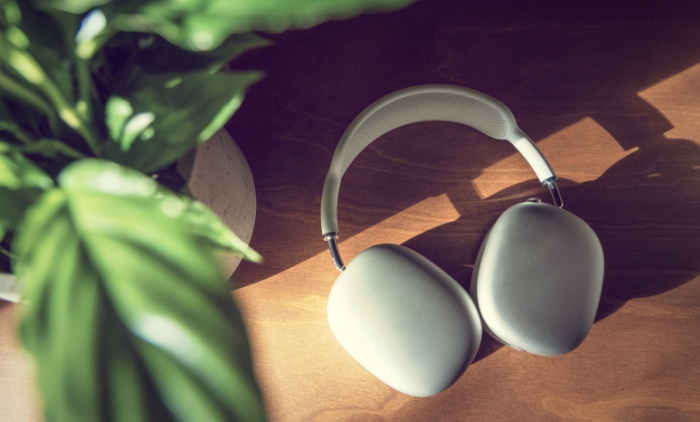How Long Do Headphones Last? The Inside Scoop

Have you ever wondered why your trusty headphones, the ones that have accompanied you on countless commutes and powered through endless playlists, suddenly give up on you? It’s a story as old as time in the tech world, but seldom deeply understood.
This article pulls back the curtain on the life cycle of headphones. From the sleek high-end models to the everyday budget-friendly pairs, we’ll explore what makes them tick and eventually stop ticking.
Get ready for a journey into the heart of your audio companions, unraveling the secrets of their lifespan and discovering how to make that relationship last just a bit longer.
Average Lifespan of Headphones in Years
On average, headphones can last anywhere from 3 to 5 years. This range is influenced by the brand, build quality, technology used, and how well they are cared for.
- Budget Models: Lower-priced models often have a shorter lifespan, averaging around 1-3 years, due to less durable materials and construction.
- Premium Models: High-end headphones can last significantly longer, often up to 5 years or more, thanks to superior build quality and materials.
- Daily Use and Care: How you use and care for your headphones also plays a critical role. Regular maintenance and careful handling can extend their life beyond the average.
Factors Influencing Headphone Longevity
Headphones, like any electronic device, have a lifespan that can be influenced by various factors. Understanding these factors can help you make more informed decisions when purchasing and using headphones, ultimately extending their usable life
Build Quality and Materials
The construction quality and materials used in headphones are fundamental to their durability. Headphones made with high-quality materials tend to withstand daily wear and tear better than those made with cheaper components.
Metal or high-grade plastic casings, durable cables, and robust connectors all contribute to a longer lifespan. Additionally, the quality of the internal components, like drivers and circuitry, also plays a significant role.
Usage Patterns
How you use your headphones significantly impacts their lifespan. Constant, heavy use will naturally lead to quicker wear and tear.
This includes how often you use them, the volume levels at which you listen, and even the types of audio you play. High volumes and heavy bass can strain the headphones’ components more than moderate listening levels.
Maintenance and Care
Proper maintenance and care are crucial for prolonging the life of your headphones. Regular cleaning to remove dust and earwax, gentle handling, and proper storage when not in use can prevent physical damage and keep the headphones functioning correctly.
For instance, winding the cables loosely instead of tightly can prevent internal wire damage, and using a protective case can shield the headphones from physical impacts and environmental factors.
Technological Aspects and Lifespan
The technology behind headphones plays a critical role in their overall lifespan. From wired to wireless models, each comes with its unique set of challenges and strengths.
Wired vs. Wireless
The debate between wired and wireless headphones isn’t just about convenience; it also touches on durability. Wired headphones, free from the constraints of batteries and complex circuitry, often boast a longer lifespan.
The simplicity of their design means there are fewer components that can fail. However, the cables in wired headphones are their Achilles’ heel, prone to tangling and fraying.
In contrast, wireless headphones offer the freedom of movement, but this comes with a cost. They rely on batteries and more complex internal electronics, which can be more susceptible to failure over time.
The need for frequent charging and the potential for battery degradation are important considerations when evaluating the lifespan of wireless headphones.
Battery Life in Wireless Headphones
Battery life is a significant factor in the lifespan of wireless headphones. Over time, rechargeable batteries lose their ability to hold a charge, which can render a pair of wireless headphones less functional or even useless.
The rate at which this degradation occurs depends on the quality of the battery, how often the headphones are used and charged, and the conditions under which they are used and stored.
Wear and Tear on Components
Headphones, regardless of type, are subjected to wear and tear on various components. Common points of failure include cables in wired headphones, which can fray or break, and ear pads, which can deteriorate or become uncomfortable over time.
Connectors, like the 3.5mm jack in wired headphones or the charging ports in wireless models, can also become loose or damaged with frequent use. Recognizing these vulnerabilities can help users take proactive steps to minimize damage and extend the life of their headphones.
Environmental Factors
Environmental factors play a significant role in the longevity of headphones. While these devices are designed to be portable and versatile, they are not immune to the effects of the elements and physical mishandling.
Exposure to Elements
Headphones are often exposed to a variety of environmental conditions that can affect their performance and durability. Moisture, heat, and dust are the primary culprits here.
- Moisture: Whether it’s sweat during a workout or unexpected rain, moisture can seep into the headphones, potentially damaging the internal components. This is particularly a concern for non-water-resistant models.
- Heat: Excessive heat can warp the materials used in headphones and degrade the electronic components inside. Leaving headphones in a hot car or under direct sunlight for extended periods is often detrimental.
- Dust: Dust particles can accumulate over time, especially in the nooks and crannies of the headphone structure. This accumulation can interfere with the mechanical parts and even reach the internal circuitry, causing damage.
Physical Damage Risks
Physical damage is another significant factor that can reduce the lifespan of headphones. Accidental drops, undue pressure, and general mishandling can lead to both cosmetic and functional damage.
- Accidental Drops: Dropping headphones can cause direct physical damage to both external and internal components, affecting their functionality. The impact can dislodge or break internal parts, especially in more delicate models.
- Pressure and Mishandling: Squashing headphones in a bag, sitting on them, or stretching them beyond their capacity can lead to structural damage. Over time, this can lead to issues like cracked frames, loose connections, or damaged cables in wired models.
Brand and Model Variations

The brand and specific model of headphones are major factors that influence their lifespan. Consumers often face the dilemma of choosing between premium and budget brands, as well as navigating the variations within a single brand’s range.
Premium vs. Budget Brands
The debate between premium and budget headphone brands often centers around their expected lifespans. Premium brands typically invest more in research and development, resulting in higher quality materials and more advanced technology.
This usually translates to better build quality, superior sound, and longer-lasting products. For instance, headphones from premium brands might feature more durable cables, stronger connectors, and better resistance to environmental factors.
On the other hand, budget brands focus on cost-efficiency. While they offer affordability, this can sometimes mean compromises in material quality, build, and technological features.
As a result, budget headphones might not withstand wear and tear as effectively as their premium counterparts. However, it’s important to note that some budget brands do offer products with impressive longevity, challenging the notion that higher price always equates to better quality.
Model-Specific Traits
Even within the same brand, different headphone models can have varying levels of durability due to design differences. For example, a brand might offer both a rugged, outdoor-focused model and a more delicate, style-oriented version.
The outdoor model would likely have features like water resistance, a sturdier build, and reinforced cables, making it more durable. In contrast, the style-focused model might prioritize aesthetics and comfort over ruggedness, potentially making it more susceptible to wear and tear.
Furthermore, technological features such as noise-cancellation or wireless capabilities can also influence the lifespan of a model. Advanced features might require more complex internal electronics, which can introduce additional points of potential failure.
Therefore, when choosing between models, it’s crucial to consider not just the brand reputation but also the specific design and features of the model in question.
Indicators of Wear and Replacement
Recognizing the signs of wear and knowing when to replace your headphones are key to maintaining a quality audio experience. Over time, all headphones begin to show signs of deterioration, and understanding these indicators can help you decide when it’s time for an upgrade.
Signs of Deterioration
Several indicators can signal that your headphones are nearing the end of their lifespan:
- Sound Quality Degradation: One of the first signs is often a decline in sound quality. This can manifest as reduced clarity, imbalance in sound between the ears, or persistent static and crackling noises.
- Physical Damage: Visible signs of wear, such as frayed cables, cracks in the housing, or loose components, are clear indicators. For wireless headphones, if the ear pads are peeling or the headband is breaking, it’s a sign of deterioration.
- Comfort Issues: Over time, the padding on the ear cups and headband can wear down, making the headphones less comfortable to wear.
- Battery Issues in Wireless Headphones: If you notice your wireless headphones are not holding a charge as long as they used to or are having trouble connecting consistently, the battery may be nearing the end of its useful life.
- Frequent Repairs: If you find yourself constantly fixing different parts of your headphones, it might be more cost-effective to consider a replacement.
Deciding When to Replace
Determining the right time to replace your headphones can depend on various factors:
- Cost of Repairs vs. Replacement: If the cost of repairing your headphones is close to or exceeds the cost of a new pair, it’s usually more practical to replace them.
- Availability of Replacement Parts: For some high-end models, it might be possible to replace certain parts like ear pads or cables. However, if these parts are hard to come by or expensive, replacement might be a better option.
- Changes in Needs or Preferences: Your personal needs or preferences might have changed since you first bought your headphones. Perhaps you now need a wireless pair for convenience, or you’re seeking better noise cancellation for travel.
- Technological Advancements: Technology evolves rapidly. Newer models might offer significant improvements in sound quality, comfort, battery life, or additional features that justify an upgrade.
Conclusion
Headphones intertwine with our daily rhythms, from energizing morning commutes to late-night gaming sessions. We’ve navigated through a range of factors that dictate their lifespan, shining a light on how different elements from build quality to usage patterns play a pivotal role.
Knowing when and why to upgrade, and understanding the nuances between various brands and technologies, equips you with the power to make smart choices about your audio companions.
With this insight, every music track, podcast episode, or video call becomes not just a momentary experience but a chapter in a longer journey with your headphones. So, take this knowledge, choose your next pair wisely, and enjoy every beat, knowing you’ve made a choice that resonates with your lifestyle and needs.


